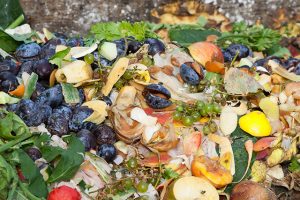
Geotrichosis – causes, side effects and treatments at NaturalPedia.com
Thursday, May 24, 2018 by Janine Acero
http://www.naturalpedia.com/geotrichosis-causes-side-effects-and-treatments-at-naturalpedia-com.html

Geotrichosis is a fungal infection caused by the fungus Geotrichum.
This fungus is among the millions of bacteria inhabiting our intestinal tract. Many species of Geotrichum have been isolated from the stools and sputum (a mixture of saliva and mucus from the respiratory tract) of humans.
Geotrichum can be found in the soil, in sewage pipes, and on plants. It can also be found in milk, on rotting meat and fruits, as well as in rug dust and on damp walls.
Other places where Geotrichum can be found include:
- Cereals
- Cheeses
- Fruit juices
- Paper pulp
- Polluted water
- Rotting bread and vegetables
- Textiles

Known risk factors and symptoms of geotrichosis
Geotrichum forms colonies that grow rapidly in a fine pattern that looks like suede. Geotrichosis mainly affects people with weakened immune systems such as those diagnosed with cancer, diabetes, and HIV. People who undergo renal transplant may also be more vulnerable to geotrichosis.
The types of geotrichosis and their symptoms inlcude:
- Pulmonary geotrichosis – Affects the lungs; symptoms include coughs with clear or yellow sputum and light to medium rales (abnormal respiratory sounds which are heard with a stethoscope). Pulmonary geotrichosis may also cause fever, an increased heartbeat (but no chest pain), a rise in white blood cells as well as intermittent wheezing.
- Bronchial geotrichosis – Involves the bronchi, the tubes which branch off the windpipe and transport air to the lungs. Symptoms resemble allergic reactions due to aspergillosis, include medium to coarse rales as well as a deep, chronic cough and gelatinous sputum.
- Cutaneous geotrichosis – A superficial cutaneous infection causes yeast to colonize skin folds such as those below the breasts, in the groin area, around the anus, and between the fingers. A deep cutaneous infection will cause nodules, tumors, and ulcers to grow on the infected person’s face, hands, and legs. This type of infection may also lead to the formation of cystic skin lesions.
- Oral geotrichosis – This infection causes whitish plaques in the mouth, accompanied by a burning sensation.
- Gastrointestinal geotrichosis – Involves an inflammation of both the small intestine and the colon, known as enterocolitis. Common symptoms include diarrhea.
- Vaginal geotrichosis – The infection is a whitish plaque and burning sensation in the vaginal area. This infection mostly affects pregnant women and is often connected to vaginitis.
Body systems harmed by geotrichosis
Studies have shown a direct link between Geotrichum and several infections affecting:
- The bronchi
- The intestinal tract
- The lungs
- The mouth
- The skin
- The vagina
There are also some cases where individuals reported allergic and asthmatic reactions after they were contaminated by Geotrichum.
Food items or nutrients that may prevent geotrichosis
Fungal infections, in general, are fairly common. Some simple home remedies can help manage the infection and symptoms.
- Apple cider vinegar – Apple cider vinegar is a common treatment for fungal infection due to its antimicrobial properties. Apple cider vinegar is mildly acidic which helps prevent the infection from spreading and promotes speedy recovery.
- Plain yogurt – Plain, unsweetened yogurt with live, active cultures is the best option for fungal infections. The probiotics present in plain yogurt can keep the growth of fungi in check by producing lactic acid.
- Garlic – Garlic is a potent antifungal agent, and it has antibacterial and antibiotic properties.
- Coconut oil – Coconut oil contains medium-chain fatty acids which work as natural fungicides.
- Tea – The tannins in tea can help stop fungal infections. Tea also has antibiotic and astringent properties that help get rid of symptoms such as burning sensation, swelling, and skin irritation.
Treatments, management plans for geotrichosis
Certain herbs are known as fungicides, or agents that destroy fungi and their spores. Some well-known fungicides include kava, spilanthes, and usnea. Other herbs that may help treat fungal skin infections include:
- Burdock
- Cedar
- Cinnamon
- Gumweed
- Tea tree oil
- Yarrow
Cedar has antifungal activity, as well as antiviral, antibacterial and antiseptic properties.
Tea tree oil has natural antifungal compounds, plus antiseptic qualities that help inhibit the spread of the infection to other body parts.
Where to learn more
Summary
Geotrichosis is a fungal infection caused by the fungus Geotrichum.
Geotrichosis mainly affects people with weakened immune systems such as those diagnosed with cancer, diabetes, and HIV.
There are several types of geotrichosis that affect the lungs, mouth, skin, vaginal area, and the intestines and colon.
Sources include:
Tagged Under: Tags: Geotrichosis





